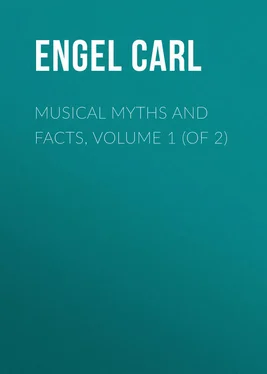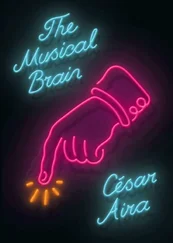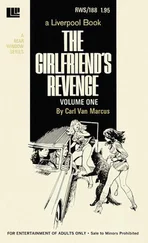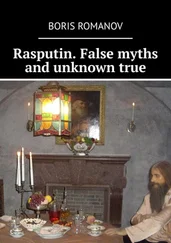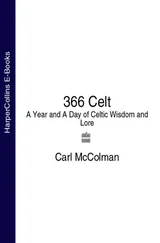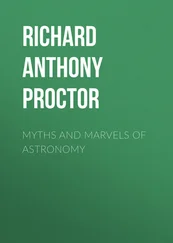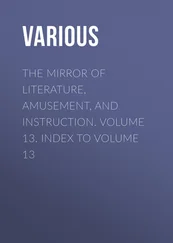Carl Engel - Musical Myths and Facts, Volume 1 (of 2)
Здесь есть возможность читать онлайн «Carl Engel - Musical Myths and Facts, Volume 1 (of 2)» — ознакомительный отрывок электронной книги совершенно бесплатно, а после прочтения отрывка купить полную версию. В некоторых случаях можно слушать аудио, скачать через торрент в формате fb2 и присутствует краткое содержание. Жанр: music_dancing, foreign_antique, foreign_prose, на английском языке. Описание произведения, (предисловие) а так же отзывы посетителей доступны на портале библиотеки ЛибКат.
- Название:Musical Myths and Facts, Volume 1 (of 2)
- Автор:
- Жанр:
- Год:неизвестен
- ISBN:нет данных
- Рейтинг книги:5 / 5. Голосов: 1
-
Избранное:Добавить в избранное
- Отзывы:
-
Ваша оценка:
- 100
- 1
- 2
- 3
- 4
- 5
Musical Myths and Facts, Volume 1 (of 2): краткое содержание, описание и аннотация
Предлагаем к чтению аннотацию, описание, краткое содержание или предисловие (зависит от того, что написал сам автор книги «Musical Myths and Facts, Volume 1 (of 2)»). Если вы не нашли необходимую информацию о книге — напишите в комментариях, мы постараемся отыскать её.
Musical Myths and Facts, Volume 1 (of 2) — читать онлайн ознакомительный отрывок
Ниже представлен текст книги, разбитый по страницам. Система сохранения места последней прочитанной страницы, позволяет с удобством читать онлайн бесплатно книгу «Musical Myths and Facts, Volume 1 (of 2)», без необходимости каждый раз заново искать на чём Вы остановились. Поставьте закладку, и сможете в любой момент перейти на страницу, на которой закончили чтение.
Интервал:
Закладка:
Instruments played with a bow of the celebrated Cremona makers are at the present day more likely to be met with in England than in Italy. In the beginning of the present century Luigi Tarisio, an Italian by birth, and a great connoisseur and collector of old violins, hunted over all Italy and other European countries for old fiddles. To avoid the high custom dues which he would have had to pay on the old instruments, he took them all to pieces, as small as possible, and carried the bits about him in his pockets and in a bag under his arm. So thoroughly was he acquainted with his acquisitions that, having arrived at the place of his destination, he soon restored them to their former condition, assigning to each fragment its original position. Tarisio made his first appearance in Paris, in the year 1827, with a bag full of valuable débris from Italy; and he continued his searches for nearly thirty years. During this time he imported into France most of the beautiful violins by Antonius Stradiuarius, Joseph Guarnerius, Bergonzi, Montagnana, and Ruggeri, which are of highest repute, and the greater number of which have afterwards found their way into England.
In Germany we meet with several collections of interest. The Museum of Antiquities, at Berlin, contains, among other musical curiosities, well-preserved lyres which have been found in tombs of the ancient Egyptians. The Gesellschaft der Musikfreunde ("Society of Lovers of Music"), at Vienna, possesses a collection of antiquated instruments, among which are noteworthy: a viola di bardone by Jacobus Stainer, 1660; a viola di bardone by Magnus Feldlen, Vienna, 1556; a viola di bardone by H. Kramer, Vienna, 1717; a viola d'amore by Weigert, Linz, 1721; a viola d'amore by Joannes Schorn, Salzburg, 1699; a tromba marina (marine trumpet) by J. Fischer, Landshut, 1722; a lute by Leonardo Tieffenbrucker, Padua, 1587; a theorbo by Wenger, Padua, 1622; a theorbo by Bassiano, Rome, 1666; a Polish cither by J. Schorn, Salzburg, 1696; a large flute made in the year 1501; an old German schalmey (English shalm or shawm ) by Sebastian Koch; an old German trumpet by Schnitzer, Nürnberg, 1598; an oboe d'amore, made about the year 1770, etc.
A curious assemblage of scarce relics of this kind is also to be found in the Museum of the Germanic Society at Nürnberg. The most noteworthy specimens in this collection are: two marine trumpets, fifteenth century; a German cither with a double neck (bijuga-cither) sixteenth century; a German dulcimer ( hackbret ), sixteenth century; a lute by Michael Harton, Padua, 1602; a viola da gamba by Paul Hiltz, Nürnberg, 1656; a viola d'amore, with five catgut strings, and eight sympathetic wire strings, seventeenth century; an arpanetta ( harpanetta , German spitzharfe ) mounted on one side with brass wire, and on the opposite side with steel wire, sixteenth century; a clavecin with finely painted cover, by Martinus van der Biest, Antwerp, 1580; two German zinken ( cornetti ) sixteenth century; two specimens of the bombardo, viz., a German alt-pommer and tenor-pommer, by J. C. Denner, seventeenth century; some specimens of the cormorne (German krummhorn ) of the sixteenth and seventeenth centuries; a trumpet made by J. C. Kodisch, Nürnberg, anno 1690; a splendid brass trombone (German bass-posaune) ornamented with the German eagle and imperial crown, made by Friedrich Ehe, in Nürnberg, anno 1612; a Polish bagpipe, seventeenth century; a syrinx of reeds covered with black leather, sixteenth century; eight military pipes, made by H. F. Kynsker, in Nürnberg, seventeenth century; a small portable organ ( regal ) with two rows of keys, sixteenth century. The regal has become very scarce. There are only a few specimens known to be in existence; one, of the sixteenth century, is in the possession of the Chanoinesses de Berlaimont, at Brussels; another, made about the middle of the seventeenth century, belongs to the Duke of Athol, and is at Blair Athol, in Scotland; another, which belongs to Mr. Wyndham S. Portal, Malshanger, Basingstoke, is in the shape of a book, and its pipes have reeds, or vibrating tongues of metal. This regal, which probably dates from the sixteenth century, is of the kind which was called in German Bibelregal , because it resembles a Bible in appearance.
Old musical instruments are generally so fragile, and were formerly thought so little of when they came out of use, that it is perhaps not surprising to find of those dating from a period earlier than the sixteenth century very few specimens, and these have generally been altered, and it is seldom that they have been properly restored to their original condition. As an instance how valuable specimens are gradually becoming more and more scarce, may be mentioned the interesting collection of obsolete German harps, pipes, and trumpets, dating from a period anterior to the year 1600, which was preserved in the Town Library of Strassburg, and which, at the recent bombardment of the town, was reduced to ashes. It contained, among other curiosities: a cornetto curvo; some specimens of the cornetto dritto; a flauto dolce. Several specimens of the bombardone, the predecessor of the bassoon; a dulcinum fagotto; two specimens of the cormorne, an oddly-shaped wind instrument belonging to the shalm or oboe family. An arpanetta. This instrument, called in German spitzharfe or drathharfe , is especially interesting, inasmuch as it resembles the old Irish harp called keirnine , which was of a similar form, and which was also strung with wire instead of catgut. There is such a harp extant in the museum of the Society of Lovers of Music, at Vienna, before-mentioned.
If the lumber-rooms of old castles and mansions in Germany were ransacked for the purpose, some interesting relics of the kind would probably be brought to light. In the year 1872 Dr. E. Schebeck, of Prague, was requested by Prince Moriz Lobkowitz to examine the musical instruments preserved in Eisenberg, a castle of the Prince, situated at the foot of the Erzgebirge, in Bohemia. Most of them had formerly been used in the private orchestra kept by Prince Josef Franz Maximilian Lobkowitz, the well-known patron of Beethoven, to whom the composer has dedicated some of his great works. The present Prince Lobkowitz, who seems to have inherited his parent's love for music, wished to have an examination of the instruments, with the object of making a selection of the most interesting ones for the great Vienna Exhibition in 1873. Dr. Schebeck found, among other rarities, violins by Gaspar di Salo, Amati, Grancino, Techler, Stainer, and Albani; a violoncello by Andreas Guarnerius; a scarce specimen of a double-bass by Jacobus Stainer; two precious old lutes by Laux Maler, who lived at Bologna during the first half of the fifteenth century; a lute, highly finished, and apparently as old as those of Laux Maler, with the inscription in the inside "Marx Unverdorben a Venetia;" a lute, with the inscription "Magno Dieffoprukhar a Venetia, 1607." There can be no doubt that we have here the Italianised name of the German Magnus Tieffenbrucker, who lived in Italy. 5 5 Some account of the instruments in Eisenberg appeared in the Vienna paper, "Die Presse," of November 27th, 1872.
Fortunately for musical antiquarians the collection of rare instruments in the Conservatoire de Musique at Paris has been preserved uninjured during the recent disasters in that city. Among the instruments may be noticed, a small and beautiful musette with drones of ivory and gold, which belonged to Louis XIII.; a German regal, or portable organ, sixteenth century; a pochette by Stradiuarius; a courtaud , an early kind of bassoon, dating from the fifteenth century; several bass-flutes, and other rare old wind instruments; Boïeldieu's pianoforte; Grétry's clavichord; a "Trumpet of Honour," which was made by order of Napoleon I., and which has the name of "T. Harper" engraven on its silver rim. M. Victor Schœlcher has presented to the Conservatoire de Musique about twenty rather primitive instruments of uncivilised nations obtained by him during his travels in Western Africa and South America, among which may be noted several Negro contrivances of the harp and guitar kind.
Читать дальшеИнтервал:
Закладка:
Похожие книги на «Musical Myths and Facts, Volume 1 (of 2)»
Представляем Вашему вниманию похожие книги на «Musical Myths and Facts, Volume 1 (of 2)» списком для выбора. Мы отобрали схожую по названию и смыслу литературу в надежде предоставить читателям больше вариантов отыскать новые, интересные, ещё непрочитанные произведения.
Обсуждение, отзывы о книге «Musical Myths and Facts, Volume 1 (of 2)» и просто собственные мнения читателей. Оставьте ваши комментарии, напишите, что Вы думаете о произведении, его смысле или главных героях. Укажите что конкретно понравилось, а что нет, и почему Вы так считаете.
